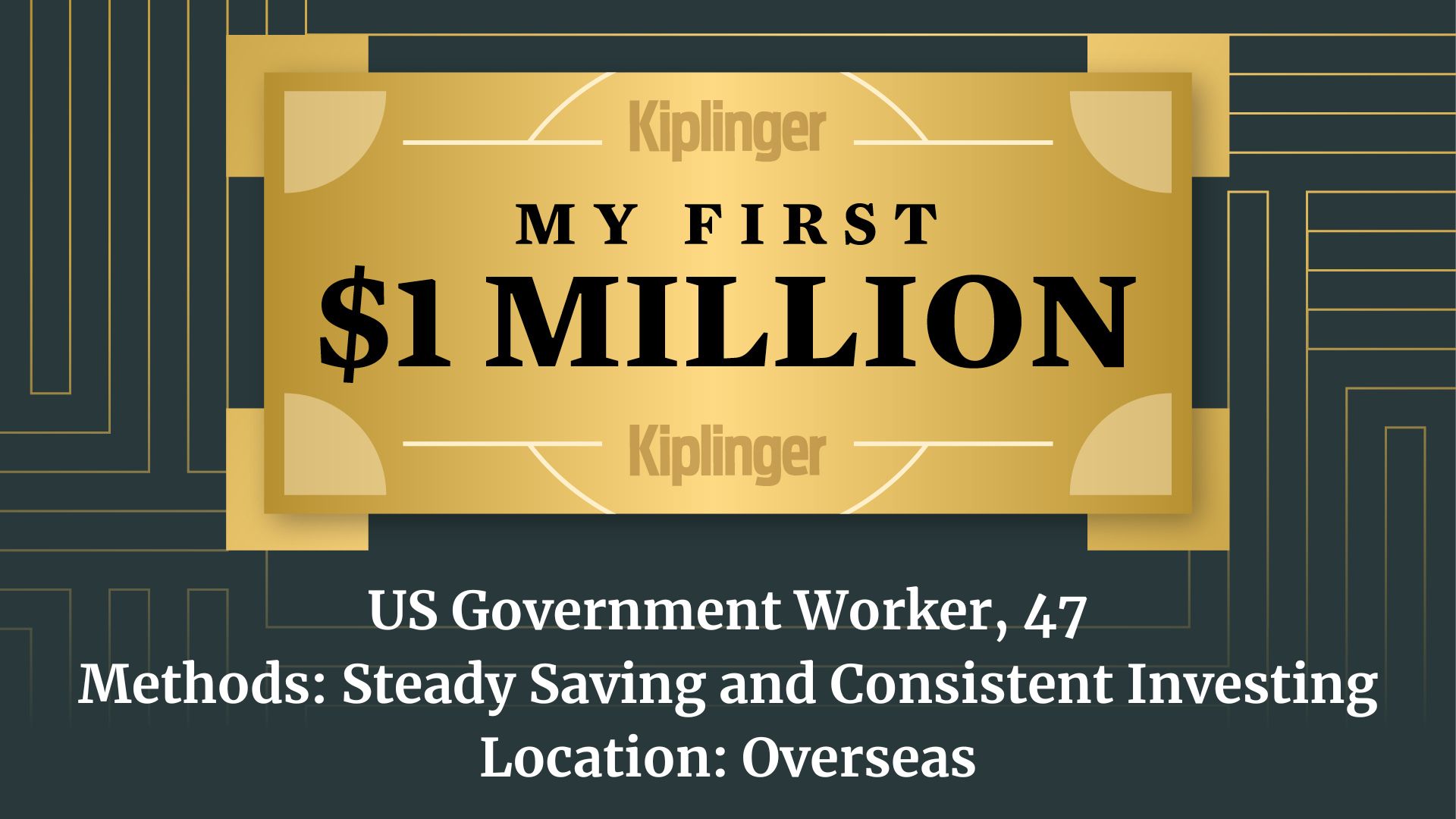Stock Market Today: Dow Jumps 658 Points After Stellar Retail Sales Report
Retail sales were up 1% in June, while consumer sentiment edged higher in July.


Stocks made a valiant rebound attempt on Friday, spurred by a sign that consumers haven't thrown in the towel.
The Commerce Department this morning said retail sales rose 1% month-over-month in June. While most of the increase was a result of higher gas and food prices, Wall Street was still pleased that the figure marked an improvement over May's modest decline and came in above economists' consensus estimate for an increase of 0.9%.
"Spending was broad based and not just boosted by more money spent on gasoline," says Jeffrey Roach, chief economist for independent broker-dealer LPL Financial.
From just $107.88 $24.99 for Kiplinger Personal Finance
Become a smarter, better informed investor. Subscribe from just $107.88 $24.99, plus get up to 4 Special Issues

Sign up for Kiplinger’s Free Newsletters
Profit and prosper with the best of expert advice on investing, taxes, retirement, personal finance and more - straight to your e-mail.
Profit and prosper with the best of expert advice - straight to your e-mail.
"Given this report, the U.S. might actually post positive growth figures for Q2 and avoid two consecutive quarters of negative growth," Roach adds. "The Fed could try to use this data to support a larger-than-expected hike later this month. Right now, the Fed is focused on the data and if the consumer is stable enough, the Fed could indeed implement a large hike without breaking the economy."
In other economic news, the University of Michigan's preliminary consumer sentiment survey for July rose to 51.1 from June's all-time-low reading of 50.0, while industrial production contracted 0.2% in June, its first month-over-month decline this year.
Financials (+3.4%) led the charge, as positive earnings reactions for Citigroup (C, +13.12%) and Wells Fargo (WFC, +6.2%) sparked a broad rally in bank stocks.
At the close, the Dow Jones Industrial Average (+2.2% at 31,288), S&P 500 Index (+1.9 at 3,863) and Nasdaq Composite (+1.8% at 11,452) were all higher. However, on a weekly basis, all three major benchmarks ended lower.
Other news in the stock market today:
- The small-cap Russell 2000 soared 2.2% to 1,744.
- U.S. crude futures rose 1.9% to settle at $97.59 per barrel.
- Gold futures gave back 0.1% to finish at $1,703.60 an ounce.
- Bitcoin continued to bounce, gaining 2.6% to $21,138.36. (Bitcoin trades 24 hours a day; prices reported here are as of 4 p.m.)
- UnitedHealth Group (UNH) was the best Dow Jones stock today, jumping 5.4% after earnings. In the second quarter, UNH reported earnings of $5.57 per share on revenue of $80.3 billion, beating analysts' consensus estimates for earnings of $5.20 per share on $79.7 billion in sales. "Encouragingly, UNH's medical care ratio edged down 50 basis points quarter-over-quarter to 81.5% as COVID-19 activity moderated and should support improved profitability over time," says CFRA Research analyst David Holt, who maintained a Strong Buy rating on the stock. "We think UNH enters the second half in a position of strength, with momentum in its shift to value-based care, especially with further integration of pharmacy-related services. UNH's capital positioning also remained strong in Q2, at $6.9B (1.3x net income), leaving ample flexibility to add physicians in Optum Health and maintain attractive shareholder returns via dividends and repurchases."
- Pinterest (PINS) spiked 16.2% after a report in The Wall Street Journal indicated Elliott Management has built a more than 9% in the firm. The activist investor has had plenty of exposure to social media companies, having previously held positions in Twitter (TWTR) and eBay (EBAY).
- Speaking of Twitter, the stock jumped 3.2% ahead of an appearance on next week's earnings calendar.
How to Choose a Mutual Fund
"Are we there yet?" That's the question many may be asking themselves right now following a first half in which inflation, the Fed tightening cycle and the stock market have taken us on a wild ride, say Carl Kaufman, Bradley Kane and Craig Manchuck, managers of the Osterweis Strategic Income Fund (OSTIX).
"Understandably, investors are anxiously awaiting better news – some tangible evidence we have 'arrived' at the bottom of whatever this is," they say. "The stakes are high, as the specter of recession looms over the economy while we try to figure out where we are, but sadly, the answers are not a simple yes or no."
Investors looking to find calm in the uncertainty might want to give the wheel to skilled, seasoned managers. There is no shortage of mutual funds to choose from, including Kiplinger's favorite low-cost offerings to fill just about every portfolio need. And while sifting through the onslaught of options available is one of the hardest parts of choosing a mutual fund, there are several steps to take to see what works best for you. Read on as we show you the best way to narrow the field.
Profit and prosper with the best of Kiplinger's advice on investing, taxes, retirement, personal finance and much more. Delivered daily. Enter your email in the box and click Sign Me Up.

With over a decade of experience writing about the stock market, Karee Venema is the senior investing editor at Kiplinger.com. She joined the publication in April 2021 after 10 years of working as an investing writer and columnist at a local investment research firm. In her previous role, Karee focused primarily on options trading, as well as technical, fundamental and sentiment analysis.
-
 My First $1 Million: US Government Worker, 47, Overseas
My First $1 Million: US Government Worker, 47, OverseasEver wonder how someone who's made a million dollars or more did it? Kiplinger's My First $1 Million series uncovers the answers.
-
 Check Out These Opportunities Created by the New Tax Law
Check Out These Opportunities Created by the New Tax LawA deep dive into the One Big Beautiful Bill Act (OBBBA) reveals key opportunities in 2026 and beyond.
-
 Beat the Money Blues With This Easy Financial Check-In
Beat the Money Blues With This Easy Financial Check-InAs 2026 takes off, half of Americans are worried about the cost of everyday goods. A simple budget can help you beat the money blues and reach long-term goals.
-
 Dow Hits a Record High After December Jobs Report: Stock Market Today
Dow Hits a Record High After December Jobs Report: Stock Market TodayThe S&P 500 also closed the week at its highest level on record, thanks to strong gains for Intel and Vistra.
-
 The December Jobs Report Is Out. Here's What It Means for the Next Fed Meeting
The December Jobs Report Is Out. Here's What It Means for the Next Fed MeetingThe December jobs report signaled a sluggish labor market, but it's not weak enough for the Fed to cut rates later this month.
-
 Nasdaq Takes a Hit as the Tech Trade Falters: Stock Market Today
Nasdaq Takes a Hit as the Tech Trade Falters: Stock Market TodayThe Dow Jones Industrial Average outperformed on strength in cyclical stocks.
-
 Dow Hits New High Then Falls 466 Points: Stock Market Today
Dow Hits New High Then Falls 466 Points: Stock Market TodayThe Nasdaq Composite, with a little help from tech's friends, rises to within 300 points of its own new all-time high.
-
 Dow, S&P 500 Rise to New Closing Highs: Stock Market Today
Dow, S&P 500 Rise to New Closing Highs: Stock Market TodayWill President Donald Trump match his Monroe Doctrine gambit with a new Marshall Plan for Venezuela?
-
 'Donroe Doctrine' Pumps Dow 594 Points: Stock Market Today
'Donroe Doctrine' Pumps Dow 594 Points: Stock Market TodayThe S&P 500 rallied but failed to turn the "Santa Claus Rally" indicator positive for 2026.
-
 Stocks Struggle for Gains to Start 2026: Stock Market Today
Stocks Struggle for Gains to Start 2026: Stock Market TodayIt's not quite the end of the world as we know it, but Warren Buffett is no longer the CEO of Berkshire Hathaway.
-
 If You'd Put $1,000 Into Lowe's Stock 20 Years Ago, Here's What You'd Have Today
If You'd Put $1,000 Into Lowe's Stock 20 Years Ago, Here's What You'd Have TodayLowe's stock has delivered disappointing returns recently, but it's been a great holding for truly patient investors.